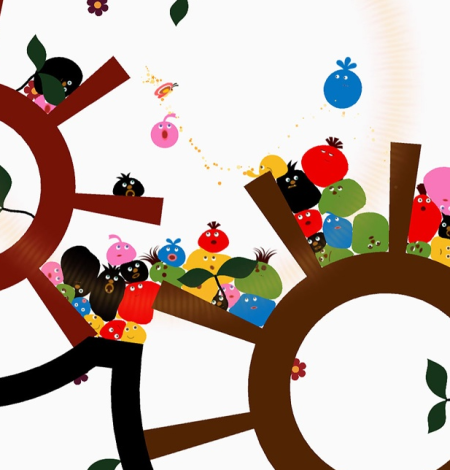Sometimes I feel like I spend all my time grumbling about badly-designed games. The reason for this is the unfortunately inevitable unavoidable Sturgeon's Law: 90% of anything is crap. And it's true. 90% of all games are crap, just like 90% of all movies are crap or 90% of all books are crap.
That's not to say all games are crap, of course. There are always gems, and there are companies which are absolutely brilliant at putting out consistent gems.
The two companies that impress me the most, that consistently release high-quality and polished products, are Blizzard and Valve. It's worth comparing them, because their design styles are very, very different.
Valve is one of the more interesting game companies out right now. They're possibly the youngest of the known-by-name game studio behemoths, as they date back merely to 1998. They also had a truly astonishing start, releasing Half-Life as their very first game to incredible reviews. From 2002 to 2005 they were involved in a complex legal battle over publishing, which they won, and much of Valve's games are now distributed over the Steam Network – an online distribution system, designed, written, and run by Valve, with over 200 games now available (the vast majority of which were not developed by Valve).
Blizzard is one of, if not the, most well-known game company in the world. It dates back as far as 1991, and its first hit (and its fifth release) was Warcraft. Blizzard, along with the ill-fated Westwood, is credited with essentially inventing the realtime strategy genre. Warcraft was turned into a franchise thanks to the rapid release of Warcraft II. Within a few years Blizzard had released Diablo and Starcraft, spawning another pair of successful franchises. Today they are undoubtably known best for World of Warcraft, the MMORPG with the most subscribers by a huge margin (an estimated factor of four over the second-largest, and approximately the same subscriber count as the entire rest of the MMORPG market added together.)
It's worth noting that Valve is actually the same age as Blizzard's youngest franchise, Starcraft – and is two years younger, if you count Starcraft as a Warcraft spinoff. Every single game released by Blizzard since 1998 has been a sequel, expansion pack, or spinoff. While Valve is best known and most concerned with their Half-Life series, they now also produce the Counter-Strike and Team Fortress serieses, as well as the standalone Day of Defeat. While all of these started as Half-Life mods, none of them are related to Half-Life in any way beyond the engine.
Blizzard succeeds for two major, extremely important reasons. Their games are carefully balanced, and they polish more than any other studio on the planet. While no modern games are bugfree on the day of release, Blizzard succeeds far better than any others do – their games are invariably smooth-running, functional, and fun, even version 1.0. World of Warcraft's original launch was probably the rockiest launch Blizzard has had in a decade, and despite being Blizzard's first MMORPG, with astronomically more success than Blizzard had ever expected, it was still the smoothest MMORPG launch in history up to that date. Think about what that says – despite abnormal stressful circumstances, they still did better than anyone else ever had.
On top of that, World of Warcraft is simply a well-built game. The interface, while not perfect, certainly takes long strides towards that state. Quests are easy to find, combat is simple to understand, leveling is not too difficult but also not too easy, both mistakes that other games have made. Blizzard has been very careful to ensure that there's always something for you to do – it learned many lessons with Diablo and Diablo II, which could be considered single-player MMORPGs, and those lessons have been well-applied. No matter where you are in the game, there's always one more quest, one more equipment upgrade, and for the majority of players there's also one more level.
Valve is a grittier company in some ways. They are often not as polished as Blizzard – while they're making great strides, they've had extremely rocky game launches. Half-Life 2, in many ways their flagship game, had quite a few curious bugs on release – to say nothing of the total repeated collapse of Steam under the load, making Half-Life 2 impossible to play and antagonizing a large number of gamers. (While World of Warcraft had similar issues, it's worth noting that WoW is actually an online game, while Half-Life 2 largely isn't. Despite this, Half-Life 2 required that Steam be running.) Their gameplay tends to be somewhat esoteric – it's quite possible in Half-Life games to get "stuck" and have to consult a walkthrough.
Valve does make truly beautiful games. They don't always push the bounds of technology too far, but their games always compare to the state-of-the-art favorably, at the very least. They are always pushing the bounds of what AI can achieve and pushing the bounds of plot and character development in video games. And those are bounds that aren't easy to push – they're stealing pages from movies, stealing pages from improvisation and theatre, and still ending up writing a good chunk of the book themselves. They're probably making the single biggest, most resource-intensive push towards Games As Interactive Fiction in the entire gaming world at the moment.
Most of what I've said here, with both companies, could be applied in reverse to the other company. Blizzard's games are always intuitive. Valve's games are not as polished. Blizzard does not make state-of-the-art beautiful games. Valve sometimes has interface issues. These are simple things.
But the most important, biggest difference, is that Blizzard fundamentally does not innovate. World of Warcraft does not have a single major original gameplay concept in it. Everything has been done before, often many times. Warcraft III has some mildly original gimmicks, but fundamentally Warcraft III is a clear successor to Warcraft II which is a clear successor to Warcraft I which, itself, is pretty much a direct knockoff of Dune 2, with obviously a lot of scenery changed. Blizzard polishes, and Blizzard balances, but if you go to the forefront of modern game research you won't find Blizzard anywhere near it.
(I want to make very clear that this is not an insult to Blizzard. Blizzard makes extremely, extremely good games. Saying that Blizzard does not innovate is a comment on the same level as saying that the Wii is, in terms of sheer performance and graphics quality, a rather anemic console. It's true, but it doesn't mean it's ineffective – it just means they've chosen a different development tactic.)
Meanwhile, Valve . . . well, Valve has just released Portal.
Portal is a curious, curious beast. It originated as a student project named Narbacular Drop (screenshot). You played as a princess who has been captured by a demon and placed within a sentient dungeon, who has the power to make connecting portals open on his walls. The dungeon joins forces with you to defeat the demon and escape.
I don't know the exact details on this, but I've heard that Narbacular Drop was demoed at an event that Gabe Newell attended. Gabe Newell is the co-founder and director of Valve. Apparently, he hired the Narbacular Drop team on the spot, and set them to work on a game titled simply Portal.
Portal is, needless to say, slightly more polished (screenshot). It is also probably one of the most novel and fun games in quite some time. Its gameplay, while absolutely headache-inducing (and motion-sickness-inducing), is extremely fun, and the plot development is nothing short of extraordinary for a game with such a minimal amount of character interaction. On top of that, it feels like more than just a portal puzzle game – many people are already declaring it one of the most satisfying game endings in years, and I'm one of them. The end of the game practically screams "we did this because it was awesome" – they were certainly under no requirement to, and nobody ever would have faulted them for providing a less perfect ending (or, in fact, even realized one was missing.) And yet, they went to the not-insignificant trouble to provide it. (I'm being intentionally vague in order to avoid giving away spoilers. Suffice to say, if you enjoy games, play this one.)
It's also worth mentioning that Portal – this bizarre half-sequel to a student game project – is not only placed in the Half-Life 2 universe, but is integrated with it to an extent where it seems it will have a lasting impact on that universe. This isn't just a standalone tech demo, this is being sold as a complete, albeit short, game – and a truly strange one.
And this is the other fundamental difference beween Blizzard and Valve. Blizzard polishes. Blizzard shines, and buffs, and makes sure every single surface is as smooth and friendly as humanly possible.
Valve sharpens. And then it goes back and draws graffiti.
I've been thinking deeply about ways to classify game studios (there's another entry on this in the future, I imagine) and one of the basic classifications I like is rather simple. "Are the people at this company writing games they want to play?"
I don't honestly know if Blizzard is. They make very good games, but they make lowest-common-denominator games. There are many, many people there, and it would not surprise me if many of them find WoW quite dull. Valve, though? I have absolutely no doubt that everyone on the Portal team was excited about finishing the game. The entire game absolutely exudes dedication and care, in a very different sense from World of Warcraft.
They're both great companies. They both make great games. And Blizzard gets more sales, and makes a truly frightening amount of profit. But I have to say, as someone who wants to see the newest and greatest in game design and concept, I'm always far more interested in whatever Valve is working on.



